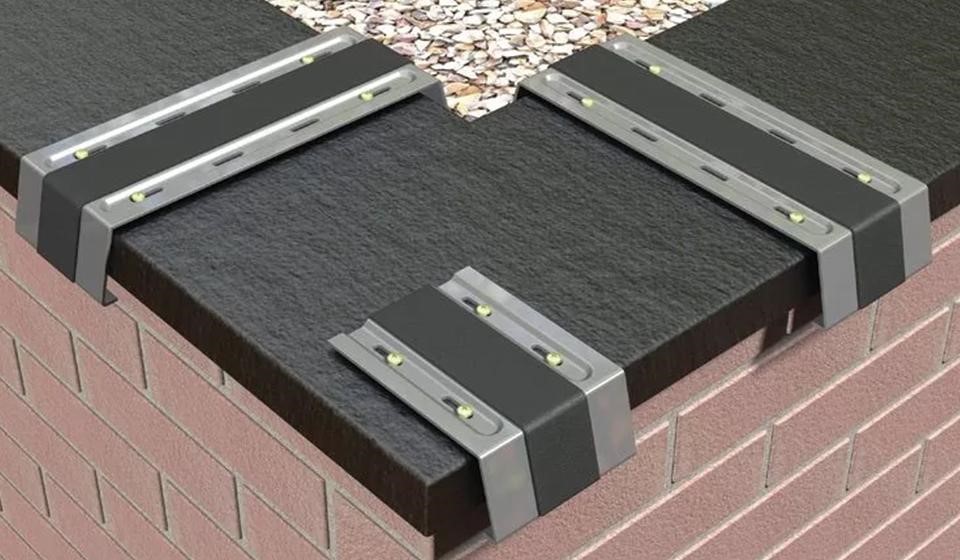

Parapet copings are the topmost elements of a parapet wall, serving as a protective barrier against the elements and providing a finished, aesthetically pleasing appearance to the roofline. These capstone components are essential in preventing water infiltration, minimising structural damage, and enhancing the overall architectural design of a building.
The use of parapet copings can be traced back to ancient civilisations, where they were employed not only for functional purposes but also as a means of architectural ornamentation. Throughout history, various cultures have embraced different materials and styles for their parapet copings, reflecting their unique architectural traditions and available resources.
Stone copings, crafted from materials such as limestone, granite, and slate, have been a popular choice for centuries. These natural materials offer a timeless elegance and a sense of solidity, making them a preferred option for traditional and heritage buildings.
Aluminium copings have emerged as a versatile and increasingly popular choice in modern construction. Their lightweight yet durable nature, combined with excellent corrosion resistance, makes them a practical and cost-effective solution for various architectural styles.
In addition to aluminium, metal copings, such as galvanised steel, stainless steel, and copper, are also widely used. Each of these materials offers unique advantages and aesthetic appeal, catering to different design preferences and project requirements.
Concrete copings, called precast or cast-in-place, offer a cost-effective and versatile solution. They can be moulded into various shapes and finishes, catering to a wide range of design preferences and budgetary constraints.
The best parapet coping should possess exceptional durability and weather resistance to withstand harsh elements, including wind, rain, snow, and ultraviolet radiation. Materials that are impervious to moisture, freeze-thaw cycles, and thermal expansion are highly desirable.
Parapet copings play a significant role in the overall aesthetic appeal of a building. The chosen material should complement the architectural style, blend seamlessly with the surrounding elements, and offer versatility in terms of colour, texture, and design options.
The long-term maintenance requirements of parapet copings should be a key consideration. Some materials may require periodic cleaning, resealing, or refinishing to maintain their appearance and functionality, while others may offer a more low-maintenance solution.
The initial cost of the coping material, as well as the associated installation and maintenance costs, should be evaluated to ensure the chosen solution aligns with the project’s budget and long-term financial considerations.
Aluminium copings are available in various profiles and finishes, including extruded, fabricated, and custom-designed options. These copings can be anodised or powder-coated in a wide range of colours, offering flexibility to match or complement the building’s aesthetic.
Aluminium copings offer several advantages that make them a popular choice among architects, contractors, and building owners. They are lightweight yet strong, making them easy to handle and install. Additionally, aluminium is highly resistant to corrosion, ensuring long-lasting performance and minimal maintenance requirements.
While aluminium copings boast numerous benefits, it is important to note that they may be susceptible to denting or deformation if exposed to heavy impacts or loads. Proper aluminium coping installation techniques and protection measures should be employed to mitigate these potential issues.
Compared to stone copings, aluminium offers a more cost-effective and lightweight solution. While stone copings exude timeless elegance, aluminium copings can provide a sleek, modern aesthetic while being easier to install and requiring less maintenance. However, stone copings may be preferred for certain architectural styles or heritage projects.
Aluminium copings share some similarities with metal copings, such as durability and corrosion resistance. However, aluminium is generally more lightweight and cost-effective than materials like stainless steel or copper. Additionally, aluminium copings can be anodised or powder-coated in a wider range of colours, offering greater design versatility.
While concrete copings are an affordable option, aluminium copings offer superior weather resistance and durability. Aluminium copings are less susceptible to cracking, spalling, or staining, making them a low-maintenance choice. Furthermore, aluminium copings can provide a more visually appealing and modern aesthetic compared to concrete options.
To ensure the longevity and performance of aluminium parapet copings, proper installation techniques are crucial. This may involve the use of compatible sealants, gaskets, and fasteners to prevent water infiltration and ensure secure attachment to the parapet wall.
Aluminium copings require minimal maintenance compared to other materials. Regular cleaning with mild detergents and soft-bristle brushes can help maintain their appearance and prevent the buildup of dirt or debris. Avoiding abrasive cleaners and ensuring proper drainage is also essential for long-term performance.
To ensure the long-term performance of aluminium copings, it is important to address any potential issues promptly. This may include repairing any dents or scratches, reapplying protective coatings if necessary, and inspecting for signs of corrosion or loosening over time.
Aluminium parapet copings offer an ideal balance of durability, weather resistance, aesthetic appeal, and cost-effectiveness. With their lightweight yet strong construction, corrosion resistance, and versatile design options, aluminium copings have become a popular choice in modern construction. By considering factors such as installation techniques, maintenance requirements, and project-specific needs, aluminium copings can provide a practical and visually appealing solution for various architectural styles.
When selecting parapet copings for your construction project, consider the numerous advantages that aluminium copings can offer. Consult with experienced professionals, such as architects, contractors, and material suppliers, to ensure the proper selection, installation, and maintenance of aluminium copings. By embracing this versatile material, you can achieve a beautiful and long-lasting roofline that enhances the overall aesthetic appeal and functionality of your building.
Managing your finances can feel like a juggling act, especially when you’re trying to keep…
Fixed full arch dental implant restorations may be worth it for patients looking for a…
What happens when two of Hollywood’s strongest creative minds come together again? That’s exactly what…
Want to find an easy site to watch your favorite anime series? If yes then,…
Consider this scenario: your business is undergoing a significant digital transformation, but rather than enthusiasm,…
Have you ever thought about how fast a celebrity outfit can become iconic? Regardless of…